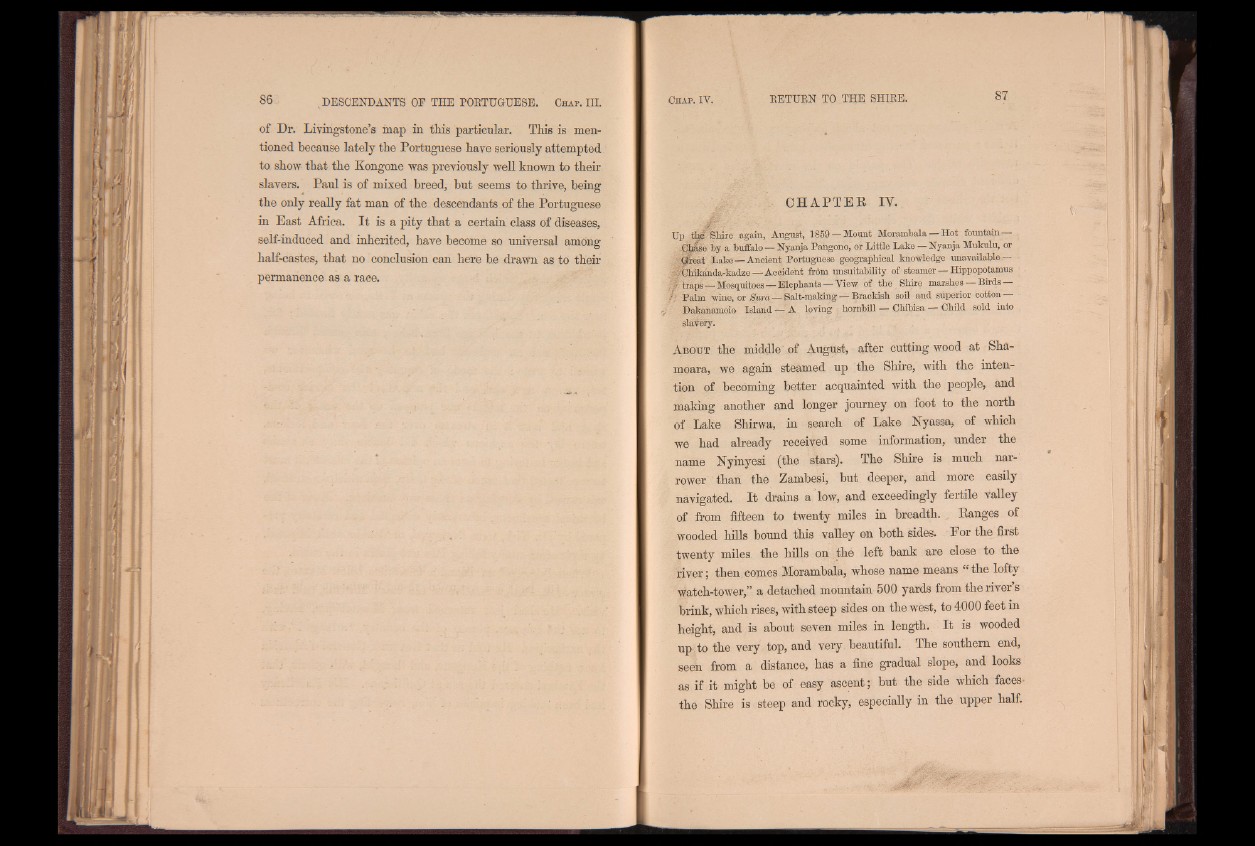
of Dr. Livingstone’s map in this particular. This is mentioned
because lately the Portuguese have seriously attempted
to show that the Kongone was previously well known to their
slavers. Paul is of mixed breed, but seems to thrive, being
the only really fat man of the descendants of the Portuguese
in East Africa. I t is a pity that a certain class of diseases,
self-induced and inherited, have become so universal among
half-castes, that no conclusion can here be drawn as to their
permanence as a race.
C H A P T E R IV.
• j0 ' ■
Up tr fS b iie again, August, 1859 — Mount Morambala— Hot fountain—
{¿So by a buffalo — Nyanja Pangono, or Little Lake — Nyanja Mukulu, or
0 ra it Lake—Ancient Portuguese geographical knowledge unavailable,—
ifubAanda-kadze— Accidebt frim unsuitability of steamer — Hippopotamus ■
traps — Mosquitoes — Elephants — View of the Shire marshes ■ Birds
|P Palm wine, or Sutci—Salt-making — Brackish soil and superior cotton
Dakanamoio Island — A loving t hombill — Chibisa Child sold into
slavery.
About the middle of August, after cutting wood at Sha-
moara, we again steamed up the Shire, with the intention
of becoming better acquainted with the people, and
making another and longer journey on foot to the north
of Lake Shirwa, in search of Lake Nyassa, of which
we had already received some information, under the
name Nyinyesi (the stars). The Shire is much narrower
than the Zambesi, but deeper, and more easily
navigated. I t drains a low, and exceedingly fertile valley
of from fifteen to twenty miles in breadth. Ranges of
wooded hills bound this valley on both sides. Eor the first
twenty miles the hills on the left bank are close to the
river; then comes Morambala, whose name means “ the lofty
watch-tower,” a detached mountain 500 yards from the river s
brink, which rises, with steep sides on the west, to 4000 feet in
height, and is about seven miles in length. I t is wooded
up to the very top, and very beautiful. The southern end,
seen from a distance, has a fine gradual slope, and looks
as if it might be of easy ascent; but the side which faces-
the Shire is steep and rocky, especially in the upper half.